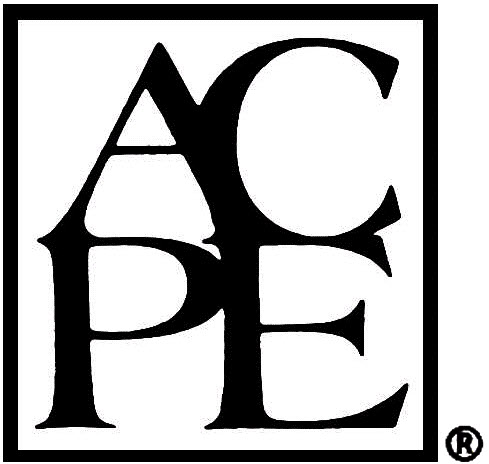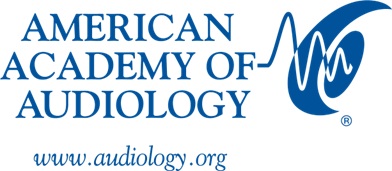Pharmacy-based OTC hearing aids
This 3-hour competency-based, interprofessional advanced training program on over-the counter (OTC) hearing aids developed by University of Pittsburgh faculty is suited for both pharmacists and student pharmacists. The self-paced eLearning program will review epidemiology of hearing loss, laws and regulations related OTC hearing aids, and the pharmacists’ OTC hearing aid patient care process. At the end of this training, pharmacists will discover how to recognize, intervene, and refer patients with hearing loss to hearing healthcare.
Enroll Now
Learning Objectives and Course Competencies
Course Competencies
A delphi study conducted by authors of the course informed the course competencies that will prepare pharmacists to safely assist customers with OTC hearing aid selection and use. After this course, participants will be able to do the following activities.
Reference: Berenbrok LA, Ciemniecki L, Cremeans AA, et al. Pharmacist competencies for over-the-counter hearing aids: A Delphi study. JAPhA. 2021;61(4):e255–e262.
Collect
- Identify medical conditions that can induce or exacerbate hearing loss.
- Identify medications with ototoxic properties.
- Recognize the impact of hearing loss on an individual’s overall health and function.
- Recognize the signs and symptoms of hearing loss.
Assess
- Assess the individual’s need for referral.
- Compare and contrast categories of hearing devices.
- Describe hearing health care interventions available to persons with hearing loss.
- Explain how cerumen can influence hearing and can impact the function of hearing devices.
- Explain results of the hearing screenings/tests that accompany hearing devices sold at the pharmacy.
- Interpret an audiometric report.
- Use the recommendations of an audiometric report to create a plan for a patient seeking hearing health care.
Plan/implement
- Adhere to laws and regulations governing hearing devices sold at the pharmacy.
- Assist patients in the selection of hearing devices by considering the individual’s needs and preferences.
- Educate patients about appropriate methods for cerumen management.
- Educate patients about features and functions of hearing devices sold at the pharmacy.
Follow-up: Monitor and evaluate
- Access manufacturer resources to assist patients with the care and operation of hearing devices sold at the pharmacy.
- Manage patient expectations of hearing devices after purchase.
- Recommend care and maintenance for hearing devices sold at the pharmacy.
Collaborate
- Collaborate with hearing health care professionals for the purpose of advice and referrals.
- Describe the audiologist’s scope of practice.
- Describe the role of the pharmacist in promoting hearing health care.
Communicate
- Communicate the benefits and limitations of hearing devices sold at pharmacies.
- Describe the benefits of amplification for people with hearing loss.
- Discuss the impact of hearing loss on communication.
- Employ effective strategies when communicating with people with hearing loss.
- Explain the effects of untreated hearing loss.
Learning Objectives
Module 1: Introduction to hearing loss: Epidemiology and health outcomes
- Discuss the prevalence of hearing loss in age groups across the lifespan.
- Explain the impact of untreated hearing loss on health, life activities, and communication.
Module 2: Federal laws, regulations, and guidance for OTC hearing aids
- Differentiate between FDA categories of prescription hearing aid, OTC hearing aid, and PSAP (Personal Sound Amplification Product).
- Describe the presenting complaints of a patient who is an appropriate candidate for OTC hearing aids.
Module 3: Overview of the pharmacists’ OTC hearing aid patient care process
- Recognize how the Pharmacists' Patient Care Process (PPCP) can be used to take care of persons with hearing loss.
Module 4: Recognizing and screening for hearing loss
- Differentiate hearing screening from assessment of hearing.
- Explain the hearing measurement processes that may be associated with OTC hearing aids.
- Discuss pros and cons of informal hearing screening measures.
- List two options for accessing a hearing screening.
Module 5: Medications with ototoxic properties: Drug-induced hearing loss
- Recognize medications and medication classes that can cause hearing loss.
- Describe the mechanism of action of medication induced hearing loss.
- Explain strategies to prevent and mitigate medication induced hearing loss.
Module 6: Exclusions for self-care: When OTC hearing aids are not appropriate
- List common ear conditions to be ruled out or treated prior to hearing aid use.
- Explain potential complications of hearing aid use.
- Differentiate optimum candidates for OTC hearing aids versus those for prescription hearing aids.
Module 7: Pharmacological and nonpharmacological self-care options for earwax removal
- Review nonprescription and non-pharmacological techniques for cerumen removal.
- Recognize exclusions for cerumen removal self-care.
Module 8: Selection and fitting process for hearing aids
- List the basic parts of a hearing aid.
- Describe three aspects of a prescription hearing aid fitting.
- Differentiate the hearing aid fitting process in prescription versus OTC hearing aids.
Module 9: Referral to hearing health care professionals for care
- Differentiate between hearing health care professionals.
- Access resources for finding local audiologists to whom referrals can be made.
- Recognize the hearing care professional best suited for patient needs.
Accreditation Information

The American Pharmacists Association is accredited by the Accreditation Council for Pharmacy Education as a provider of continuing pharmacy education. The Pharmacy-based OTC hearing aids advanced training program is approved for a total of 3.0 contact hours of continuing pharmacy education (CPE) credit (0.3 CEUs). The ACPE Universal Activity Numbers (UAN) for this activity are listed below.
Successful completion of the course involves passing a final post-assessment following the learning activity with a grade of 70% or higher and will result in 3 contact hours of CPE credit (0.3 CEUs).
- ACPE UAN: 0202-0000-23-317-H99-P
- Release Date: August 1, 2023
- Expiration Date: August 1, 2026- PLEASE NOTE: NO Home Study credit granted after this date.
To obtain 3.0 contact hours of CPE credit (0.3 CEUs) for the Pharmacy-based OTC hearing aids advanced training program, the learner must complete all components listed above, and CLAIM credit for each component. Participants will need to have a valid APhA (pharmacist.com) username and password, as well as a CPE Monitor account to claim credit. After credit has been claimed, please visit CPE monitor for your transcript. The Certificate of Completion will be available online upon successful completion of the necessary activity requirements on the participant’s My Training page.
Development
Pharmacy-based OTC hearing aids is an education activity for pharmacists developed by the University of Pittsburgh and licensed by the American Pharmacists Association. © 2023 American Pharmacists Association

Acknowledgements:
The academy affirms the value of this training program.

Course Authors:
Lucas Berenbrok, PharmD, MS, BCACP
Associate Professor of Pharmacy and Therapeutics
University of Pittsburgh School of Pharmacy
Pittsburgh, PA
Elaine Mormer, PhD, CCC-A
Professor and Vice Chair, Clinical Education
University of Pittsburgh School of Health and Rehabilitation Sciences
Pittsburgh, PA